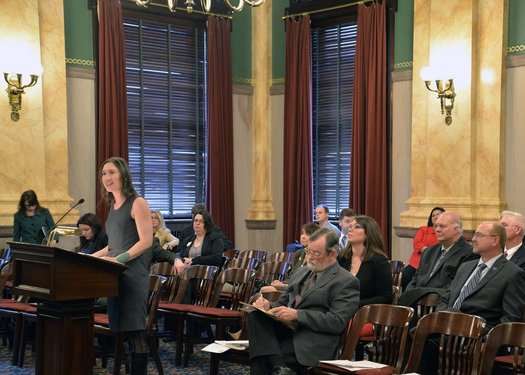Property tax for farmers rose 307 per cent between 2008 and 2014
By Diego Flammini
Assistant Editor, North American Content
Farms.com
Members of the Ohio Farm Bureau recently met with Ohio’s Senate Ways and Means Committee to discuss the sharp increases local farmers have faced in property taxes.
Ohio’s Current Agricultural Use Value (CAUV) helps farmers pay lower property tax in the hopes they’ll keep the land instead of selling it for development.
The statewide average market value per acre is $3,889 per acre, according to the CAUV. Franklin County’s land averages about $10,263 per acre.
But according to reports farmers have seen their property taxes rise as much as 307 percent between 2008 and 2014.
And with corn sitting at around $3.68 per bushel and other low commodity prices, farmers are struggling to pay down their loans.

Katherine Harrisson addreses the Ohio Senate Ways and Means Committee.
Photo: Ohio Farm Bureau
“I anticipate (the farm) can bring in about $180 per acre per year,” Katherine Harrison, a livestock farmer and Farm Bureau state trustee, said to the committee, according to the Ohio Farm Bureau. “The taxes run approximately $120 per acre per year. That leaves a possible net of $60 per acre per year to pay down a loan for $300,000 to purchase the land.”
Members of the Farm Bureau spoke on Senate Bill 36. The bill would remove wrong information in CAUV calculations and make the formula less affected by non-farm factors.
CAUV is one of the main obstacles facing Ohio farmers, state trustee Mike Bensman told the Ways and Means Committee.